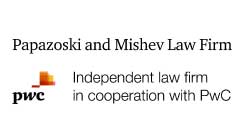Over the past few years, Romania’s property market has matured from a fragmented landscape into one defined by stability, sustainability, and strategic sectoral shifts. Musat & Asociatii Partner Monia Dobrescu, Tuca Zbarcea & Asociatii Partner Razvan Gheorghiu-Testa, and Nestor Nestor Diculescu Kingston Petersen Partner Vlad Tanase take a closer look at how secondary cities are outpacing the capital in price growth and major players are doubling down on assets.
An Evolving Market
“The Romanian real estate market has steadily grown over the past years, and we are seeing the market dominated by more established players, with a strong ‘hold’ perspective,” Tanase begins. “Opportunistic developers or so-to-say ‘develop-to-exit’ investors tend to hold less market share than before.” This comes with the downside of the real estate market being less liquid than other markets, which can put off some investors, “but it is also a strong indicator of market maturity. We are seeing more and more investors looking to buy real estate projects, but major players still prefer to hold on to their assets.”
Dobrescu agrees, adding that the real estate market’s steady evolution in recent years has been “characterized by adaptability and resilience in the face of significant macroeconomic and geopolitical challenges.” A growing trend is the focus on green and sustainable projects. “We see an increasing demand for energy-efficient housing, but also for photovoltaic and wind projects. Consumers are more conscious of environmental impact and prefer buildings that integrate green technologies such as solar panels, advanced insulation systems, and smart resource management solutions.” She believes that the market’s future looks promising, driven by urbanization, changing demographics, and infrastructure development.
Gheorghiu-Testa adds that the last two years have been very intense, especially considering the “number and magnitude of transactions, with many assets, especially retail assets, changing their owners. The ‘usual suspects’ like NEPI, AFI, and Dedeman, were as active as the market allowed them to be, but it is also worth noting the entry into the market of a ‘batch’ of newcomers, in particular M Core Properties or, more recently, Granit Asset Management or Solida Capital.”
Secondary Cities Soaring
This real estate evolution is seeing smaller universities and tech hubs drawing buyers away from Bucharest.
“It is true that some cities, such as Cluj, Brasov, Iasi, or Timisoara, are seeing rapid price surges, but one has to consider their size in terms of area and population,” Tanase says. “When you have a smaller size with significant hillside or mountainous terrain or graded slopes, there are fewer opportunities for available land and, of course, there is a higher construction cost. The price surges are quite dynamic, and the work-from-home model has allowed people to work from various locations, thus impacting demand and prices in other cities,” he explains. “The residential market is the first, however, to be impacted by economic trends, and there is little foretelling in this regard, but we might see rapid shifts in its dynamic.”
Dobrescu adds that Cluj-Napoca and Brasov in particular are “experiencing rapid price surges due to increased demand for housing, driven by their growing tech industries, quality of life, and tourism appeal.” She explains that, in Cluj, demand is high, while supply is limited, mainly due to the slow pace of development, while in Brasov, price increases are driven by the city’s high development potential and the attractiveness of the natural environment. “Also, cities like Timisoara and Iasi are experiencing rapid price surges due to factors such as economic growth, influx of young professionals, and strategic locations.”
Gheorghiu-Testa agrees as well that these cities have registered a considerable uptick and adds that “investors and developers in those cities had the chance of a real dialogue with local administrations, based on the common goal of contributing to the sustainable development of the cities, including the urban regeneration of former industrial areas. Unfortunately, this has not happened in the last 4-5 years in Bucharest, neither at the central administration level nor at the sector level, and now we are starting to see the results.”
Spotlight: Logistics and Modern Offices
Furthermore, the surge in online commerce and shifting workplace demands have vaulted logistics parks and amenity-rich office campuses to the forefront of investment.
“Based on publicly available information, the logistics market has been the highest performer in Romania lately,” Tanase continues. “With the increase in online shopping and the change in shopping habits in general, coupled with increased logistics demands and the interconnection of economies, we can fairly say that logistics has been and likely will be the main forward driving factor of real estate.” Crucially, he adds that there is a “surge in demand for modern offices with easy access to public transportation. Peripheral projects located on the outskirts of major cities, which are less accessible, seem to struggle a bit and have to compensate for the limited accessibility with various other incentives.”
Agreeing, Dobrescu chimes in stating that “the most recent real estate transactions have focused on the industrial and logistics segment, which continues to attract increased investor interest.” According to her, the modernization of infrastructure is another key advantage in driving economic growth and the development of the industrial and logistics sectors.
“From what we see, including in terms of transactional work, the industrial/logistics sector is the most dynamic one, while the most affected, at least in Bucharest, is the office market,” Gheorghiu-Testa adds. In fact, he reports that office deliveries are shrinking in Bucharest, and “2024/2025 will mark the lowest delivery volumes in two decades.” Still, a bright side to the story exists, “especially if you see things from the perspective of office building owners: limited or no supply means higher rents and low vacancy levels.”
Challenges and Opportunities
“Romania has one of the biggest growing potentials in the region due to its large population and size, offering immense growth opportunities,” Tanase says finally. “With new infrastructure projects being developed at full speed and the recent Schengen accession, we believe we are yet to see the growing opportunities being taken full advantage of.”
Concerning specific challenges, Dobrescu highlights “potential interest rate hikes, economic fluctuations, and regulatory changes.” On the other hand, according to her, the opportunities lie in “continued urbanization, infrastructure improvements, and increased foreign investment, which could further boost demand and development in the real estate market. The Schengen accession is expected to enhance Romania’s attractiveness for foreign investors, especially in logistics and industrial real estate.”
Gheorghiu-Testa, for one, considers the general economic outlook to be “less bright than it was a few years ago. Romania is struggling with the twin deficits – current account deficit and budget deficit – and financial analysts predict that after the presidential elections in May, we will see tax increases.” This may influence overall investor confidence, as well as borrowing costs. “In addition, and strictly regarding Bucharest, the administrative bottleneck at the level of the Bucharest City Hall has negatively impacted the city’s real estate development in recent years. Unfortunately, in the short term, with the current Mayor-General running for President of Romania, things are unlikely to get any better, and this will push developers and investors even more strongly toward more development-friendly cities,” he concludes.
This article was originally published in Issue 12.3 of the CEE Legal Matters Magazine. If you would like to receive a hard copy of the magazine, you can subscribe here.






















